Dark Souls 2 has finally made it on the PC and that means that PC gamers can now “enjoy” one of the hardest games this generation. With all the press surrounding it and even an actual TV commercial, people feared that developer From Software have gone soft and would make it a casual experience. Having played it I can say with complete honestly that you don’t have to worry as this is their most inaccessible game yet.
Dead Again(And Again, And Again…):
For part one of this analysis, I’m going to focus on the mechanics and systems and save talking about level and boss design for part two.
Dark Souls 2 continues the basic plot of the original but in a different land. You have been cursed and are turning into a hollow: An undead being who will wander the land until you are eventually driven insane. After arriving in a strange land, you learn that there might be a way to break the curse and it involves a whole lot of dying.
Notice that I didn’t say “killing” as anyone can tell you that the Souls series is very difficult. For those with no prior experience, the games are all about 3rd person ARPG combat with a focus on timing, patience and positioning as opposed to abstracted stats.
Last time I played a Souls game, I didn’t like Dark Souls as I felt it moved away from what made the original so good with great level design and giving players of all skill levels ways to play. But before we get to all the nasty stuff, let’s talk about what’s changed.
From Software has made some major changes under the hood to raise the overall challenge of the game and alter the underlining systems and first we have a set of good news/bad news to talk about. Good news, your healing options have now been expanded to other items besides the estus flask, the bad news is now healing takes longer and you only start out with one flask use per bonfire visit. You can upgrade the flask by finding items hidden throughout the world.
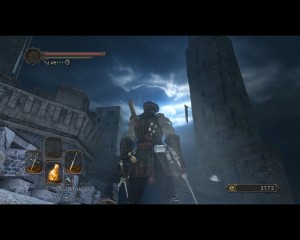
Improved graphics and performance makes the PC version a lot better compared to the first Dark Souls.
Magic spells still need to be equipped at bonfires to be used on top of the stat requirements.
However now there are items you can use to replenish the uses of your spells along with a new stat that helps casting speed. This makes Dark Souls 2 very friendly to spell casters.
Speaking of bonfires, they now act as fast travel anywhere in the game, but the distance between them have increased. For some straight up bad news, now each time you die you’ll lose a portion of your max health up to a max lost of 50% of your health. The only ways to cure this are to either use a consumable, or be summoned into someone’s game and help them.
Dual wielding which was a strange alternate combat style has been given a boost this time making it a viable option for the brave/crazy. Now having a weapon in each hand allows you to strike quicker as you’re alternating between the two and you can now wield your second weapon two handed and even use special new attacks with it. This essentially allows you to make use of even more attacks than before.
Dual wielding along with the changes to magic makes a lot more builds viable for Dark Souls 2 as opposed to being situational in previous games.
Light plays a role and you can forgo a left handed weapon or shield in place of a torch. Using a torch gives you increased lighting and can be used to light torches in the environment that stay permanently lit.
As a great thing for the PC version, From Software has made some improvements and the game runs great with no slowdown from what I could see. And for even better news: No more Games for Windows Live for the multiplayer, making summoning and invading a lot easier. However people have been saying that you really want to use a gamepad for the PC version just like with the first Dark Souls.
At the beginning of this post, I said that Dark Souls 2 is the most inaccessible game yet and that wasn’t a compliment. It seems that while designing the game, From Software definitely wanted to raise the challenge factor. And in the process the game takes a number of cheap turns with the gameplay that less experienced players will have to suffer through.
…And Again, And Again, And Again:
Dark Souls 2 features one of the worst openings to try and show someone the ropes that I’ve seen in a video game and a number of design decisions that pretty much punish new players. After a basic tutorial area that goes over the controls, the first real area to explore is The Forest of Giants.
Off the bat, the player will be assaulted by enemy groups, where in previous games it was just one on one fights or you could pull one or two them. This is where you’ll noticed that enemies have a habit of not only bunching up, but attacking through each other making it very hard to hit someone without his buddies getting free shots.
The area and actual boss fights don’t do a good job in my opinion of showing off the Dark Souls gameplay.
Stay tuned for an upcoming post where I have more to say on why the level design in Demon’s Souls world 1-1 was such a great way to learn the game compared to the Souls games.
Combat is slower this time around for you, as the developers have increased the delay of a lot of your actions.
The ability to guard break or stagger a guarded enemy now has a few more seconds of windup making it harder to pull off without the enemy attacking you in the process. And I also noticed that it seemed that the game didn’t recognize the commands for guard breaks or jump attacks as reliably compared to Dark Souls 1.
I also found targeting enemies a pain as there were cases where despite being locked on, I was attacking in a different angle than the enemy’s position. There were also times where I was missing enemies with my attacks despite the previous hit connecting. Trying to hit an enemy out of a roll, there were several times where my character didn’t turn to face the locked on enemy and he just swung at nothing. The camera still continues to be a problem in narrow areas or when fighting giant sized enemies.
A new abstraction in the form of agility is the main reason for the slower combat. Raising the attribute: Adaptation will increase your agility which not only increases the speed of your actions, but returns the invincible frames (frames of animation where you can’t get hit) when rolling. From what I could tell, this was very important for melee builds.
At the start, enemies were hitting me very easily as I tried to dodge. One boss was pretty much hitting me every time I tried to dodge around him. Then once I got to around 98 agility, I was pretty much dodging attacks without much trouble. But still, there were cases where I would dodge an attack at one point and have it missed completely, then do it again at the same point and have it hit me. From what people have been saying, getting close to 110 agility is the way to go if you want to rely on dodging.
To make things even harder for new players, your equipment has changed for added difficulty. Weapons have far less durability now and will break after a few minutes of combat. You can take a weapon down to 1/60 durability left and then go to a bonfire and it recovers for free. Have it hit 0 and your only options are to take it to a blacksmith or use repair powder with both options costing you souls.
In previous games, it was vitally important to get your hands on a shield with 100% physical damage reduction to allow you to fully defend against standard attacks while you’re learning enemy patterns. And these shields would commonly be found early on in the game. Now most shields that you find don’t have them, meaning that while you’re trying to learn the game, you’ll still be taking damage when you block.
To makes things worse is how the developers have altered several areas to that further raised the difficulty while punishing the player in the process.
Brutalized Learning Curve:
First is that anyone can tell you that a major part of learning the Souls games is being able to read attack animations to know when it’s safe to attack. This was important when dealing with larger enemies or boss fights with creatures that could easily break through your defenses.
Instead of making these enemies smarter, the developers opted to give them several attack combos based off of the exact same animation with the only difference being an extra attack. So one attack could be the enemy raises its hands and does a two punch combo and then the other attack is that the enemy raises its hands, does a two punch combo and follows that with a sweeping kick.
However those two attacks have the exact same animation, making it impossible for someone to tell the difference until that third attack is launched or it’s too late.
And in Dark Souls 2 with the added time to heal (which agility also impacts,) one attack could be all you need to lose.
This isn’t too big a deal once you get enough agility to quickly dodge out of the way, but it’s going to take a lot of levels and souls before you can stop worrying about this.
Another area where the developers are punishing new players is with the ability to get souls. As in previous games, die once and your souls drop to the ground giving you a chance to pick them up again on your next life. Die a second time and all those souls are gone for good. But that was okay as enemies respawned and you could spend time grinding enemy encounters for those souls back.
The developers have now “fixed that” by giving you a limit on how many times enemies spawn in a specific area. Now you may be thinking that’s a good thing as it means that you can wander through areas without worrying about being attacked.
However, having a limit on enemy spawns means there is both a limit to the grinding that you can do for items and the amount of souls you can earn. To make things worse, it’s not based on how many souls you collect but the number of times you die or the area respawns enemies. This puts even more pressure on the player to develop their builds correctly as now they can’t just grind souls for that one extra point needed or to buy a new weapon before going to a hard area.
There is an item you can use to “increase the difficulty” of areas and bring enemies back. But again this is an advanced item and not something new players would know or even have access to.
Taking a Bonfire Rest:
All in all, I’m not fond of the changes to progression and the design as the latter punishes new players for experimenting and learning the game, while the former hurts the “action” part of Dark Souls ARPG design. When I’m playing an action or skill based game, I don’t want my success to be gauged on abstract systems but on my own skill level.
Telling me that despite my reaction time an abstract factor will determine if I avoid damage or not is a conflict in design in my opinion. And the cheapness of giving enemies combos off of the same animation frame doesn’t make things challenging but frustrating.
Case in point, one of the early bosses in Dark Souls 2 is a greater pain in the ass than the final boss of Demon’s Souls based on when you encounter him. Both bosses make use of dashing at the player to perform a swipe attack. But where in Demon’s Souls, properly dodging will give you a chance to hit it, Dark Souls 2 gives this boss a chance of performing a two or three hit combo off of the same attack animation.
I know that a major part of the Souls games is that they are supposed to be challenging from the get go; it’s why I fell in love with Demon’s Souls. However there are far less opportunities to recover from a failed build or massive soul lost. Again not a problem for the expert players, but it leaves people trying to learn the game or experiment out in the cold.
Speaking of experimenting, there is a finite amount of titanite shards in the early game used for upgrading gear. And spreading them around too quickly will leave you unable to upgrade any new gear until you find a new source. Instead, enemies who could drop those shards didn’t show up for several hours of play, when I was looking for the next grade up to continue improving my weapons.
Level design in my opinion still feels lacking compared to Demon’s Souls, in where each area was its own separate and fully fleshed out entity, giving players the ability to explore a fully realized environment. Due to the open world nature, here the levels feeling like sprawling areas with no sense of geography made even worse now that they didn’t need to develop as many shortcuts thanks to the bonfire fast travel system.
Bosses continue to not impress me and lack the creativity and variety seen in Demon’s Souls, but I’m going to focus more on them and level design in part two.
All in all I find that Dark Souls 2 continues to take the series into “difficulty for the sake of difficulty” territory as opposed to creating challenge through mastery.
From reading message boards, this is a new team at the helm compared to Dark Souls which could explain the subtle changes in the design and mechanics. Trying to learn how to play Dark Souls 2 for the first time, is not akin to climbing Mt. Everest, but running head first into a brick wall and hoping this time it will break.
It’s been awhile since I’ve played a game that so actively fights against someone new trying to play it. Someone who has never played a souls game will not be given any explanation about the importance of poise or what agility even is. Information that expert players will have already looked up or have an understanding from Dark Souls 1.
The changes in design that target new players and punish them for trying to learn the game are simply examples of bad design. Expert players who know how to build their characters won’t be punished by this, but you shouldn’t add systems that more or less target the least experienced of your fan base. In that aspect, Dark Souls 2 may be the grognard war game version of ARPG design in how new players should steer away from.
For the hardcore who blew through Dark Souls 1 with little difficulty, Dark Souls 2 is more to love. But what’s strange is that despite the harder learning curve and starting out, the game as a whole grows to be easier over time for the expert players or those that manage to stick it out which I’ll save for part two. However, new players should be ready to face wall after wall of difficulty and arbitrary hoops to jump through to find some enjoyment out of this game.
For more looking at the level and boss design, check out part two of my analysis.
(Note: After Dark Souls was released, the developers did release balance patches that changed some of the grinding and difficulty around. And there is always a chance that they will do the same with Dark Souls 2 and invalidate elements of this review)

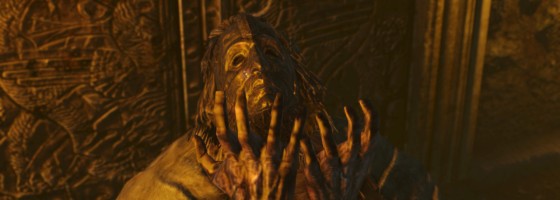
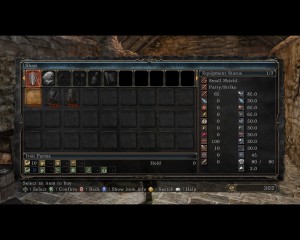
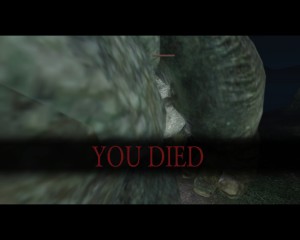
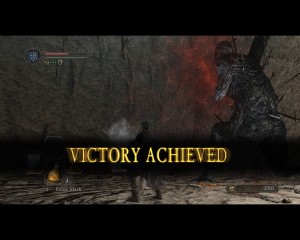

Pingback: Dark Souls 2 (Part 2): A Weary World | Game Wisdom()
Pingback: Breaking Down Dark Souls 2 | Game Wisdom()
Pingback: Training Day in Demon's Souls With Great Level Design | Game Wisdom()
Pingback: The Dangers of Abstraction in Game Design | Game Wisdom()